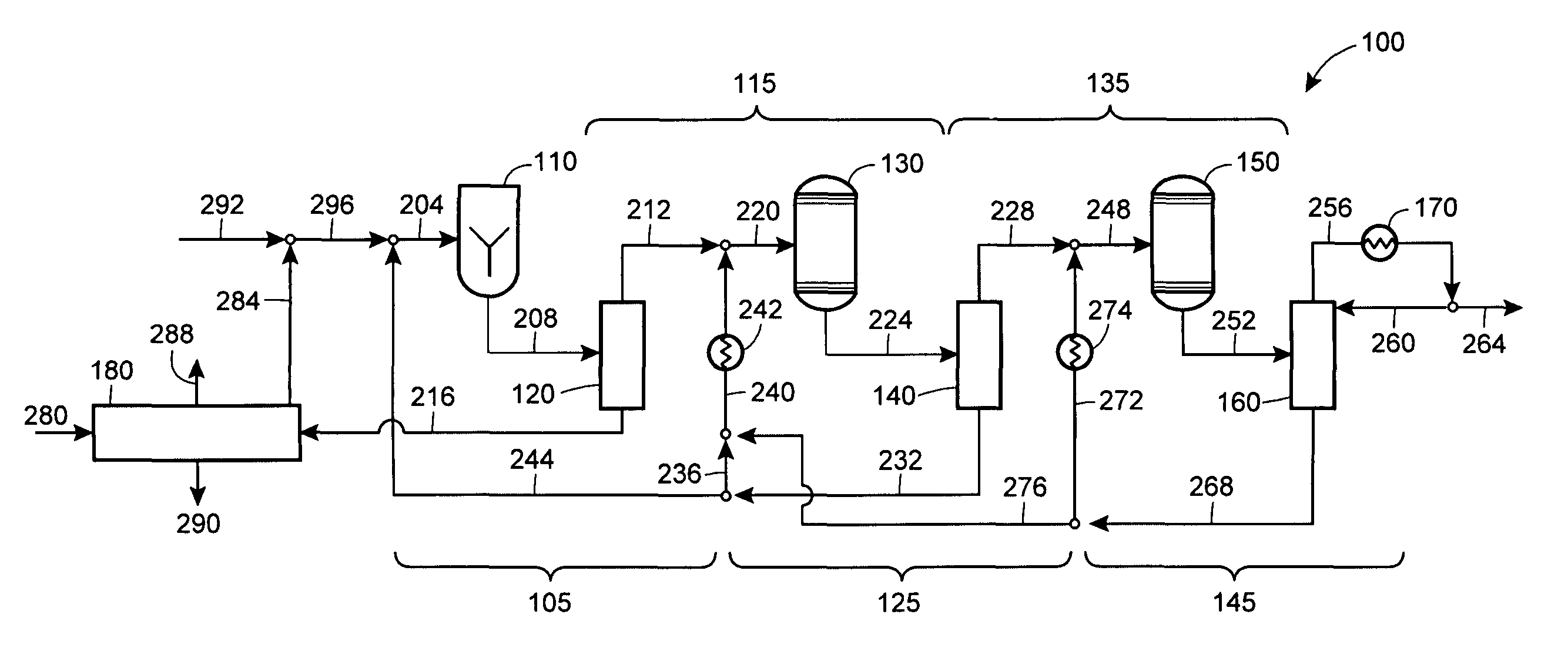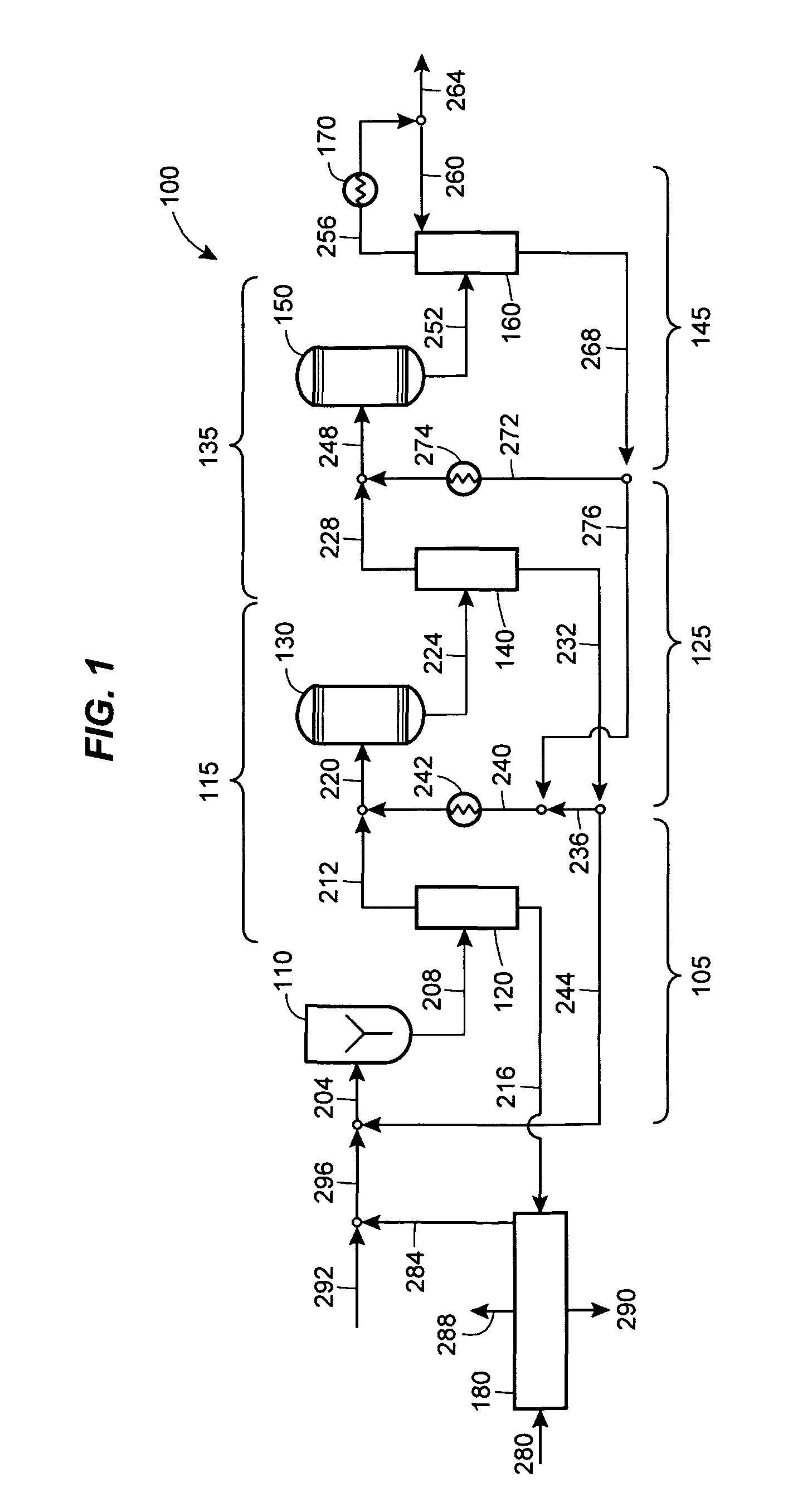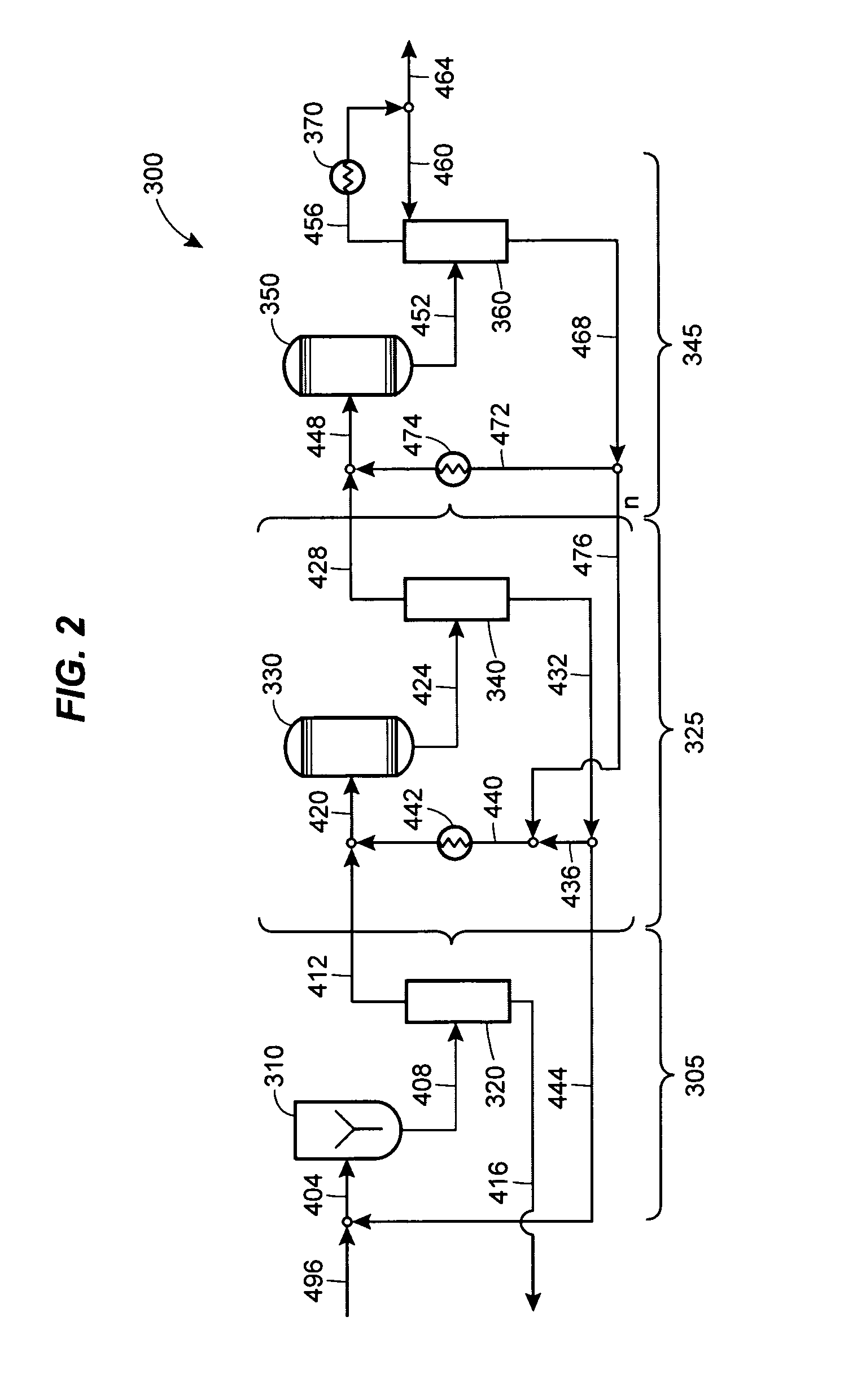Melt-crystallization separation and purification process
a technology of solids and purification process, which is applied in the direction of separation process, filtration separation, centrifuge, etc., can solve the problems of oxygen ingress and enter the centrifuge, and achieve the effect of efficient operation of the para-xylene manufacturing process
- Summary
- Abstract
- Description
- Claims
- Application Information
AI Technical Summary
Benefits of technology
Problems solved by technology
Method used
Image
Examples
example 1
[0078]Tests were conducted on the slurry feed and filtrate liquid secondary component outlet streams of different solid-liquid separators to measure the effect of the separators on the molecular oxygen content of the separator process streams. The oxygen measurements were made with an ORBISPHERE Model 2611E oxygen analyzer (available from Hach Ultra, Geneva, Switzerland), which was calibrated using air having a 20.9% oxygen content. Samples were warmed to 25° C. prior to oxygen measurement, and an enclosed sample system (i.e., completely isolated from atmospheric oxygen) was used in all tests.
[0079]A filter column using nitrogen as a displacement fluid and operating as a first-stage separation unit (i.e., analogous to the separation unit 120 in FIG. 1) in a para-xylene purification process was tested. The filter column slurry feed and filtrate were analyzed for molecular oxygen content over an approximate one-day period. Over the test period, the data (summarized in Table 1) indicat...
example 2
[0083]A crystallization / double-reslurry process for the purification of para-xylene (i.e., as illustrated in FIG. 1) was simulated to compare the process efficiencies associated with the use of filter column separation units in place of centrifuges. Table 3 presents mass balance information for the process of FIG. 1 in which the separation units 120 and 140 are both filter columns, and the separation unit 160 is a wash column. Table 4 presents mass balance information for the process of FIG. 1 in which all separation units 120, 140, and 160 are centrifuges. In Tables 3 and 4, the “stream number” refers to the streams as labeled in FIG. 1. The “composition” entry includes the given component's contribution from any solid and / or liquid phase present in the stream. The “other C8” composition entry includes ortho-xylene, meta-xylene, ethylbenzene, and any other residual aliphatic and aromatic hydrocarbons. Each process generally produces streams of increasing para-xylene purity at each ...
PUM
| Property | Measurement | Unit |
|---|---|---|
| pressure | aaaaa | aaaaa |
| pressure | aaaaa | aaaaa |
| pressure | aaaaa | aaaaa |
Abstract
Description
Claims
Application Information
 Login to View More
Login to View More - R&D
- Intellectual Property
- Life Sciences
- Materials
- Tech Scout
- Unparalleled Data Quality
- Higher Quality Content
- 60% Fewer Hallucinations
Browse by: Latest US Patents, China's latest patents, Technical Efficacy Thesaurus, Application Domain, Technology Topic, Popular Technical Reports.
© 2025 PatSnap. All rights reserved.Legal|Privacy policy|Modern Slavery Act Transparency Statement|Sitemap|About US| Contact US: help@patsnap.com



